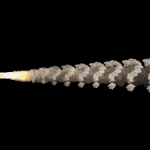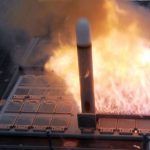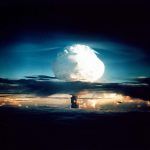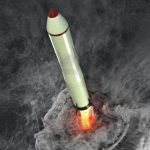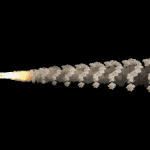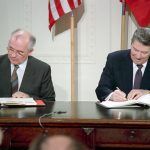Why the security of nuclear materials should be focus of US-Russia nuclear relations
By Andrew W. Reddie, Bethany Goldblum | November 13, 2018
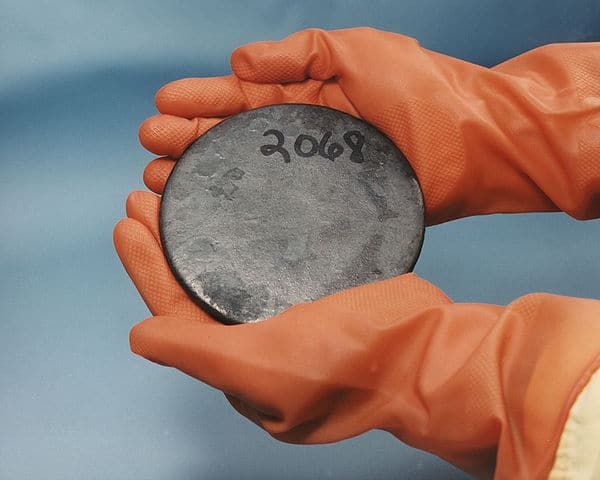 A billet of highly enriched uranium that was recovered from scrap processed at the Y-12 National Security Complex Plant.
A billet of highly enriched uranium that was recovered from scrap processed at the Y-12 National Security Complex Plant.
The Trump administration’s decision to withdraw from the INF Treaty following years of Russian noncompliance is the most recent upset in a series of escalating tensions between the two superpowers. The political status of Ukraine and Crimea, Russian disinformation campaigns in the 2016 election cycle, and continued uncertainty surrounding the extension of New START have led many commentators—even Russian Prime Minister Dmitry Medvedev—to argue that relations between Russia and the United States are at their lowest ebb since the end of the Cold War. While the Helsinki summit may have left much to be desired in terms of strategic stability and arms control, the United States and Russia need to—and can—find a balance between competition and cooperation, particularly with regard to nuclear security.
Past efforts to bolster nuclear security—the prevention and detection of unauthorized access to and illicit transfer of nuclear and radioactive material—via four US-sponsored Nuclear Security Summits provided a starting point for securing nuclear materials around the world. But these discussions have, unfortunately, been abandoned. The United States, Russia, and a number of other countries have continued cooperating within existing institutional arrangements, such as the International Atomic Energy Agency’s International Nuclear Security Advisory Service. Even so, the Nuclear Threat Initiative (NTI) and the Economist Intelligence Unit (EUI) have, for the first time, pointed to an increase in nuclear insecurity due to a “deterioration of political stability and governance, an increase in corruption, and the expanding presence of terrorist groups around the world.” Moreover, the existing institutional architecture exempting some types of nuclear material—particularly material designated for use in naval propulsion—from oversight has become a growing cause for concern.
The pressing need for global action on nuclear security may offer the United States and Russia a way around the generally deteriorated state of their relations. They have, after all, both historically played key roles in creating and maintaining cooperative frameworks to bolster nuclear material security—in spite of other disagreements. Indeed, Russia and the United States are still partners in the Global Initiative to Combat Nuclear Terrorism, a collective dedicated to improving the accounting and control of nuclear materials. Future cooperation on nuclear material security would build upon numerous previous joint efforts to reduce the risks posed by fissile material, typified by the recently concluded Megatons to Megawatts Program, an effort so effective that roughly one in 10 US light bulbs was powered by fissile material from dismantled Russian nuclear weapons for multiple decades.
Today, a new framework is needed to tackle risks posed by nuclear material in transit, to track small quantities of fissile material used in testing equipment, and to address the approximately 150 metric tons of weapons-grade uranium fuel designated for use in naval propulsion.
Nuclear material security in the naval sector represents an increasingly salient issue for all states—particularly as a number of governments announce plans to develop nuclear navies or face pressure to do so. Tony Abbott, a former prime minister of Australia, argues that a nuclear naval program is necessary to address the future security challenges in his country’s part of the world. South Korea has a similarly renewed interest in a nuclear navy. In the Middle East, Iran is purported to be planning a reactor for nuclear propulsion and in South America, Brazil has had an active program to develop nuclear-powered attack submarines for more than a decade. Beyond the planning phase, India recently commissioned its first nuclear submarine, the INS Arihant, using a Russian design.
The combination of these developments suggests that the time is ripe to consider how to decrease the proliferation and nuclear security risks associated with naval nuclear material as part of a more general reinvigoration of nuclear security practices.
Under the existing institutional architecture afforded by the Nuclear Non-Proliferation Treaty (NPT), comprehensive safeguards agreements provide a legally binding method of deterring the diversion of nuclear materials to illicit use. But safeguards agreements have two problems. First, they do not apply to all states. Countries recognized as “nuclear-weapon states” under the treaty—the United States, Russia, China, France, and the United Kingdom—are not subject to the system of inspections and audits these safeguards provide. Also, states not party to the NPT, including India, Pakistan, and North Korea, are not subject to safeguards. Then again, under the IAEA’s rules, non-nuclear-weapon states can request that nuclear material they produce indigenously or without explicit supplier restrictions be exempted from safeguards—for use as (for example) fuel in naval reactors.
There are a number of potential institutional configurations for plugging the holes in the nuclear security system. One approach might involve further bolstering the cooperative measures included in the Convention on the Physical Protection of Nuclear Material—the only legally binding document that outlines government obligations to protect nuclear facilities and nuclear material in transit. Another proposal calls for a so-called Supplemental Protocol within an IAEA-supported and state-sponsored committee process. The benefit of both of these approaches is that their implementation would use the IAEA’s institutional framework (relying on expertise and legal precedence emanating from the existing safeguards regime) rather than starting from scratch. A third approach may involve using the Global Initiative to Combat Nuclear Terrorism as a diplomatic vehicle to pioneer an international materials accountancy system similar to those that national governments use to keep track of their fissile material.
The creation or strengthening of institutions to address nuclear material security in any of these ways would not only lessen the chance that terrorists or other bad actors could gain possession of enough fissile material to make a nuclear weapon. Improving nuclear security might also represent an opportunity to reinvigorate international cooperation on nuclear nonproliferation and arms control.
Those who do not favor major new approaches to nuclear security put forward three main arguments. The first: The risks to nuclear security are not high enough to justify intervention. Non-nuclear weapons states, for example, are years from developing nuclear navies (if they ever do so). Second, they argue that any attempt to institutionalize a universal approach to nuclear materials held by non-nuclear weapons states, nuclear weapons states, and the states that are not part of the NPT would be unwieldy and potentially legitimize nuclear proliferation in countries outside the existing NPT framework. The final argument is perhaps the most cynical, suggesting that the exemptions in the existing safeguards regime are driven, in large part, by the major powers’ interest in exempting sensitive military technology from IAEA—and subsequently foreign—oversight.
Clearly, though, the arguments for dealing more effectively with nuclear security are compelling. There are a variety of international regimes involving countries that do and do not have nuclear weapons, as well as states outside the NPT framework. These include the Comprehensive Test Ban Treaty Organization, the Additional Protocol for IAEA safeguards, and the Nuclear Suppliers Group. Indeed, the need to enhance nuclear security in non-NPT countries is particularly acute; there are clear opportunities to decrease proliferation and security risks by expanding the extant safeguards architecture.
Two points should be made here. The first is that there are certainly parts of the nuclear fuel cycle that are going to remain off-limits from international oversight. Second, recent developments in theory and methods for nuclear-warhead verification offer promise for nuclear safeguards in the naval sector. Nascent work on zero-knowledge protocols, blockchain-based systems, and increasingly sophisticated remote-sensing tools such as applied antineutrino technologies are worth further consideration as part of new nuclear-material verification and safeguards efforts to bolster nuclear security.
In simple terms, nuclear security risks are greatest where safeguards end. As the amount of nuclear material outside of the existing international safeguards architecture expands, the threat of malicious actors acquiring and weaponizing fissile material increases. Indeed the sheer mass of naval nuclear material in the United States and Russia calls into question the limits of safety. A US-Russian-led effort to deal with naval and other nuclear materials offers the promise of addressing this key challenge. It also could provide a pathway to continued cooperation between the world’s leading nuclear nations on matters that extend far beyond nuclear materials security.
Together, we make the world safer.
The Bulletin elevates expert voices above the noise. But as an independent nonprofit organization, our operations depend on the support of readers like you. Help us continue to deliver quality journalism that holds leaders accountable. Your support of our work at any level is important. In return, we promise our coverage will be understandable, influential, vigilant, solution-oriented, and fair-minded. Together we can make a difference.
Share: [addthis tool="addthis_inline_share_toolbox"]


